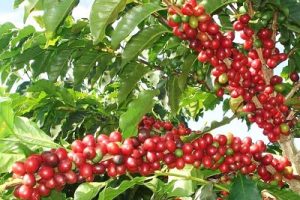BY MENGISTEAB TESHOME
Groundwater-based irrigation is the primary resource for agricultural production to improve food security, incomes, and livelihoods of rural communities. Groundwater irrigation plays a critical role to promote poverty alleviation, food security, and farmers’ coping strategies to dry seasons and rainfall variability. According to Food and Agricultural Organization (FAO), eighty percent of groundwater is used for irrigation purposes. Groundwater is also used for drinking and domestic purposes.
However, reliable access to water remains a major constraint for millions of poor farmers involved in both rain-fed and irrigated crop production, International Fund for Agricultural Development (IFAD) said. Moreover, groundwater is not readily available for use, and vulnerable to prolonged drought. Multiple factors like groundwater overdraft, rapid depletion, rainfall shortage, and deforestation are causing stress on groundwater resources. The level of groundwater table is not constant in fact it fluctuates due to recurrent drought and the way people water their crops and weather-related process. Thus, properly managed and utilized groundwater can increase water security for crop production.
The rainfall variability particularly during the dry season has been the bottleneck for food crop production in Ethiopia. Rain-fed agriculture will be negatively shocked by rainfall variability and reduction in the number of rainy days in a year. Management and proper utilization of available water is a better solution for rain-fed agriculture to cope up with rainfall and climate variability.
The wise use and management of water resources for the development of crop production is one of the crucial parts of water resources planning and management, and the economic and social development of smallholder farmers. Despite groundwater resources are recognized as crucial for sustainable agricultural growth and poverty reduction, increase in food demand and climate variability have resulted in a chronic food shortage in Ethiopia.
Farmers’ perceptions towards irrigation water saving and utilization practices result in overexploitation of groundwater. Besides, the inappropriate planning and management of groundwater utilization is one of the most important factors.
Furthermore, farm size per household is 0.5 ha, and the irrigated land per household ranges from 0.25–0.5 ha in Ethiopian Ministry of Agriculture (MoA) Natural Resources Management Directorates, stated. As a result, individual land holdings per household are too small to feed the household. With this limited farm size owned and increasing food demands of the population, it is useful to transform the rain-fed agricultural systems to the combined rain-fed and irrigation agricultural systems to produce two to three crops per year.
Thus, improving the growth of food production and income of smallholder farmers require effective and optimal water resource development and utilization practices.
Taking all the variables into account, Ethiopia has launched a 5-year project, which is expected to benefit about 1.48 million people from groundwater-based irrigation facilities and water supply.
Speaking at the Horn of Africa Groundwater for Resilience Project Launching Workshop, Water and Energy Minister Habtamu Itefa said that approximately 1.48 million people are expected to benefit from groundwater based water supply and irrigation facilities.
He added that the 210-million-USD fund is all grant and 67 percent leveraged from the International Development Association (IDA) of the World Bank.
The African Development Bank and the European Union have also supported the project financially, it was learned.
According to the Minister, the project is important and very timely to the effects of climate change.
“The project is very timely in responding to the ongoing drought that our country is facing. All targeted woredas by the project are those highly affected by drought and vulnerable to climate shocks,” Habtamu elaborated.
The project will support the Ministry to carry out groundwater potential assessment in 67 prioritized woredas and the project finance development of ground-based water supply in 55 woredas, according to the Minister.
World Bank Water Global Practice Manager, Soma Ghosh Moulik said the regional project included Ethiopia, Kenya and Somalia as well as the Intergovernmental Authority on Development (IGAD) in its first phase.
“This is a regional project with a total of 385 million USD and covers three countries: Ethiopia, Kenya and Somalia as well as IGAD in the first phase, of which Ethiopia alone receives 210 million USD, which is the lion’s share of the project of the first phase, and this is an IDA grant.”
The regional project fosters cooperation between Ethiopia, Kenya, Somalia, and IGAD that will work together to tap into the largely untapped groundwater resources in the region to cope up with and adapt to the effects of climate change, mainly drought.
Noting that the financial instrument allows countries to join the project as they meet the readiness criteria, the manager said South Sudan and Djibouti are making preparations to join the project in the second phase.
According to her, Ethiopia is the first country to meet both the readiness criteria and declare the project effective as of 2nd August 2022.
The project is expected to build trust and foster cooperation among countries in the IGAD region as most of the identified groundwater resources are trans-boundary, it was pointed out.
This first phase of the regional project is expected to reach 3.3 million direct beneficiaries through interventions designed to increase access to water supply and reduce vulnerability to climate change impacts.
According to various documents, global groundwater depletion increased from time to time, particularly in sub‐humid and arid areas. Overuse of water resources at the local level provokes the thought that all usable water can be accessed.
Furthermore, there could be various push-and-pull factors for accessing groundwater, which will ultimately determine the practical utility of groundwater to deal with water scarcity. Ubiquitous availability, ease in access, vast storage potential, and reliable supply and quality are the pull factors attracting people towards groundwater.
The pull factors make groundwater an ideal resource for drought mitigation. Push factors are unfavorable conditions when people have no other option than to resort to groundwater supply under constrained situations such as when extracting and assessing groundwater is expensive.
The land mass area irrigated by ground water has reached 30 percent, particularly in China, India, Pakistan and Mexico. At the same time, due to over exploitation of groundwater beyond the recharge capacity and the continuous lowering of water table large chunks of energy is being consumed making groundwater irrigation unsustainable in the long term. To ensure its sustainability the usage of groundwater management should be framed based on principles as well need to be evolved based on scientific assessments, institutionally and legally supported, and implemented by empowering various stakeholders.
THE ETHIOPIAN HERALD TUESDAY 27 SEPTEMBER 2022





